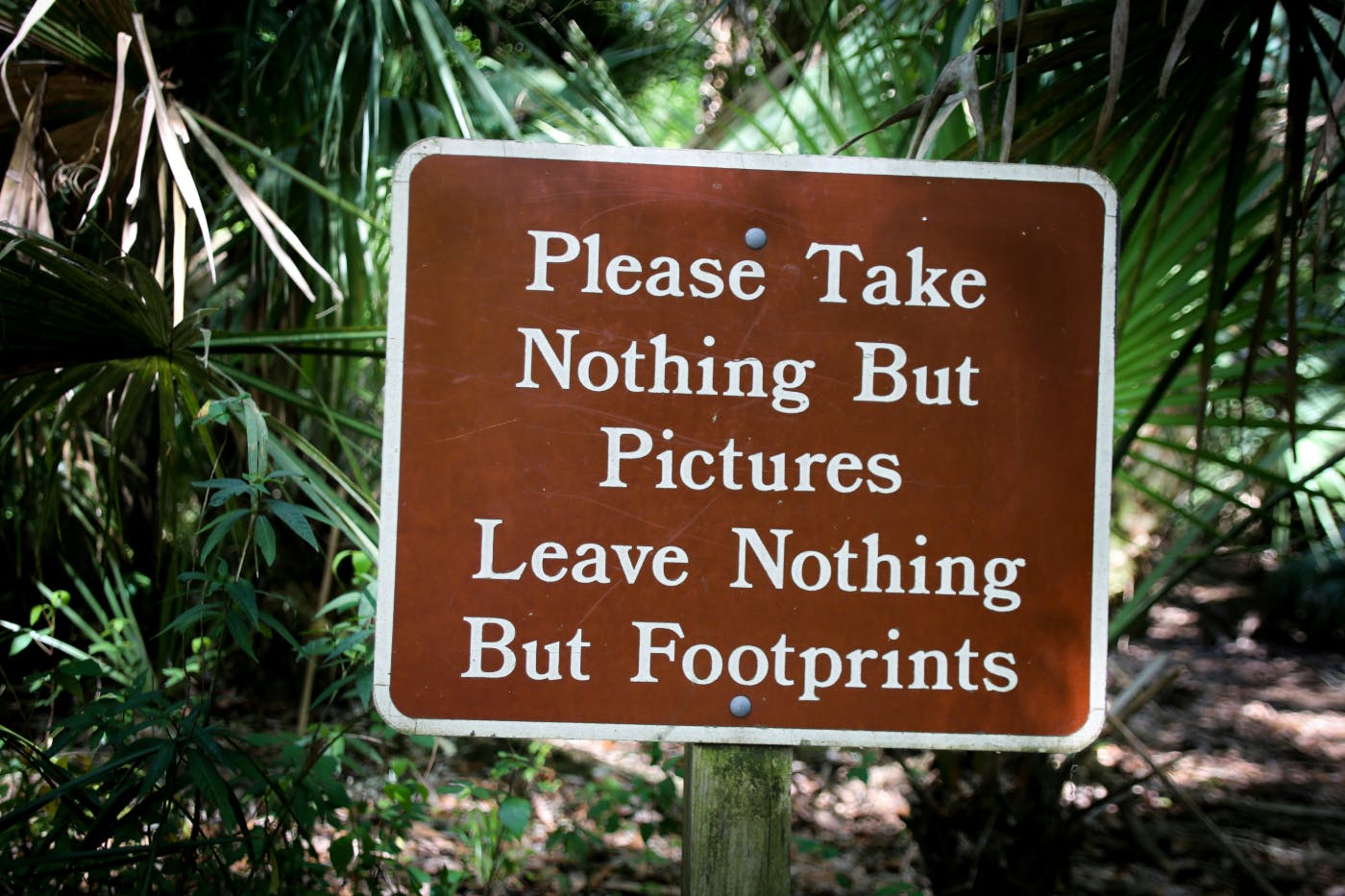
A 2020 McKinsey survey revealed that over 60% of consumers are willing to pay more for products with sustainable packaging, showing a clear preference for ethical business practices.
Consumers today expect more from brands than just products—they seek purpose, authenticity, and a commitment to sustainability. A 2020 McKinsey survey revealed that over 60% of consumers are willing to pay more for products with sustainable packaging, showing a clear preference for ethical business practices. However, sustainability isn’t just about green labels or corporate responsibility statements—it’s about embedding long-term, responsible practices into the very fabric of your brand.
In this guide, we’ll explore key strategies to ensure your brand thrives while making a positive impact on both society and the environment. For a deeper dive into sustainability beyond profits, check out Building a Brand That Lasts: Sustainability Beyond Profits.

The Power of ‘Why’ in Branding
A strong brand isn’t built on products alone—it’s built on purpose. The most successful and sustainable brands don’t just tell people what they do or how they do it; they start with why. This concept, championed by leadership expert Simon Sinek, highlights that when a brand leads with its core belief—its why—it creates deeper emotional connections with consumers, employees, and partners.
Why does your company exist beyond making a profit? Why should people care? Brands that answer these questions with clarity and authenticity foster stronger loyalty and stand the test of time.
For a deeper exploration of how to uncover and refine your company’s why, take a look at Unveiling Your Company's ‘Why’: A Blueprint for Purposeful Business.
How to Define Your Brand’s Purpose
- Ask the Big Questions – What problem are we solving beyond just selling a product? How does our company improve lives? What do we want to be known for in 10, 20, or even 50 years?
- Look at Your Core Values – Ensure your purpose aligns with your brand’s fundamental values and guides every decision.
- Align Purpose with Business Strategy – A brand that values sustainability should integrate it into every business decision, from product design to logistics to partnerships.
Brand Example: Patagonia
One of the best examples of a brand built on why is Patagonia. Their purpose isn’t just selling outdoor gear—it’s environmental activism. From funding sustainability initiatives to discouraging overconsumption, their business strategy directly aligns with their why: saving the planet.
Why This Matters More Than Ever
A Porter Novelli study found that 78% of consumers believe businesses should have a positive impact on society. Consumers don’t just want brands to have values—they want to see them in action.

Commit to Ethical Sourcing and Production
Consumers today are more informed and demanding transparency—they want to know where their products come from, who made them, and what impact they have on the world. A 2021 Nielsen report found that 73% of global consumers say they would change their consumption habits to reduce environmental impact, and 81% of millennials expect companies to publicly commit to sustainability goals.
But here’s the challenge: Ethical sourcing and production aren’t just about looking sustainable—they require brands to build genuine sustainable business models. Greenwashing (the act of falsely claiming sustainability) has led to rising consumer skepticism, and companies that fail to walk the talk risk backlash.
So, how do you commit to ethical sourcing and production in a way that’s real and impactful?
Start with Supply Chain Transparency
Your brand is only as ethical as your supply chain. If you don’t know where your materials come from or how they’re produced, your consumers won’t trust you. Be proactive:
- Map out your entire supply chain—from raw materials to final product.
- Work with suppliers that share your sustainability values.
- Regularly audit factories and farms to ensure ethical labor practices.
Patagonia leads by example with their “Footprint Chronicles,” which provides customers full transparency into their supply chain—where each product is made and under what conditions.
Choose Sustainable and Responsible Materials
Ethical production starts with what goes into your product.
- Use recycled, biodegradable, or upcycled materials such as post-consumer recycled plastics or organic cotton.
- Reduce reliance on virgin plastics and petroleum-based textiles.
- Partner with suppliers who use regenerative farming methods, such as organic, pesticide-free, and water-efficient agriculture.
Allbirds sources sustainable wool, sugarcane-based soles, and eucalyptus fibers, cutting their carbon footprint in half compared to standard shoe manufacturing.
Fair Wages and Ethical Labor Practices
Sustainability isn’t just about the environment—it’s also about people. Ethical brands must ensure that the workers in their supply chains are treated fairly.
- Partner with Fair Trade Certified suppliers.
- Ensure safe working conditions and livable wages in every country where you operate.
- Avoid fast fashion exploitation—many brands outsource labor to cut costs, but unethical practices lead to human rights violations.
Everlane pioneered "Radical Transparency," openly sharing the cost breakdowns of their products, revealing factory conditions, and ensuring workers are paid fairly.
Reduce Waste and Carbon Footprint
A truly sustainable brand doesn’t just focus on materials—it considers the entire product lifecycle.
- Optimize packaging by using compostable or minimal packaging.
- Implement closed-loop recycling and encourage customers to return products for repurposing.
- Reduce emissions by sourcing and manufacturing closer to your customers.
Nike’s Move to Zero initiative focuses on circular design—recycling old sneakers into new materials and minimizing production waste.
Certifications That Build Trust
Consumers rely on certifications to differentiate real sustainability efforts from greenwashing. If your brand is committed to ethical sourcing, consider obtaining recognized sustainability certifications such as:
- B Corp Certification for overall ethical business practices
- Fair Trade Certified for ethical labor and wages
- GOTS (Global Organic Textile Standard) for organic cotton and textiles
- Cradle to Cradle Certification for sustainable product design
- 1% for the Planet for brands donating to environmental causes
The Body Shop became the first major global beauty brand to be certified as B Corp, ensuring high ethical standards in sourcing and production.
Be Transparent—Or Risk Losing Consumer Trust
Greenwashing is rampant, and consumers are skeptical. The key to building real credibility is transparency.
- Show your progress, not perfection. Don’t claim to be “100% sustainable” overnight—share your journey and improvement goals.
- Publish sustainability reports. Back your claims with real data and impact measurements.
- Own your shortcomings. No company is perfect—if you’re working to improve, share that openly.
Ben & Jerry’s reports publicly on its climate impact, dairy sourcing practices, and social activism efforts, ensuring accountability.
Why This Matters More Than Ever
The future of branding is ethical, sustainable, and transparent. Consumers expect it, governments are tightening regulations, and brands that fail to adapt will be left behind.
To explore how sustainability shapes long-term business success, read Building a Brand That Lasts: Sustainability Beyond Profits.

Adopt Sustainable Business Practices
Sustainability isn’t just about what you sell—it’s about how you operate. Every aspect of your business, from logistics to office culture, contributes to your environmental and social impact. A study by Harvard Business Review found that companies with strong sustainability initiatives outperform their competitors financially over the long term, proving that responsible business practices aren’t just good for the planet—they’re good for growth.
How can brands build sustainability into daily operations?
Reduce Energy Consumption and Carbon Footprint
- Transition to renewable energy sources such as solar or wind power for offices and facilities.
- Upgrade to energy-efficient appliances, lighting, and HVAC systems to cut energy waste.
- Implement carbon offset programs to neutralize emissions from shipping and manufacturing.
- Offer remote work options to reduce employee commuting emissions.
IKEA has committed to becoming climate positive by 2030, meaning they will remove more carbon from the environment than they produce. They’ve invested in renewable energy, sustainable forestry, and closed-loop production models.
Sustainable Packaging and Logistics
- Replace traditional plastic packaging with biodegradable, compostable, or recyclable alternatives.
- Optimize product design to reduce excess packaging.
- Adopt eco-friendly shipping methods, such as partnering with carbon-neutral carriers.
- Implement a return and reuse program to extend product lifecycles.
Apple has removed plastic from its packaging and switched to 100% recycled aluminum in some of its products, reducing the company’s overall carbon footprint.
Create a Sustainable Workplace Culture
- Encourage paperless operations and use cloud-based solutions.
- Provide employees with incentives for green commuting (bike-to-work programs, EV subsidies, or public transport credits).
- Reduce office waste by switching to reusable kitchenware and refillable supplies.
- Organize corporate volunteer days focused on environmental and social initiatives.
Patagonia gives employees paid time off to work on environmental activism and contributes a percentage of profits to grassroots environmental groups.
Measure and Continuously Improve
- Use sustainability tracking tools like carbon footprint calculators and lifecycle assessments.
- Set clear, measurable sustainability goals and publish progress reports.
- Obtain industry-recognized sustainability certifications such as B Corp, LEED (for green buildings), or ISO 14001 (environmental management standards).
Ben & Jerry’s publicly reports on their carbon emissions, water usage, and ingredient sourcing, making sustainability an integral part of their brand identity.
Sustainable business practices are not a one-time initiative—they require ongoing commitment and improvement. To understand how sustainability ties into branding and consumer trust, explore Branding in 2025: Authenticity, Purpose, and Personalization.
Build Authentic Brand Messaging
Consumers today are more skeptical than ever—and for good reason. With brands making bold sustainability claims, many fail to follow through, leading to accusations of greenwashing. A 2022 study found that 68% of consumers distrust sustainability claims unless they see proof, and regulatory agencies are cracking down on misleading messaging.
If your brand promotes sustainability, your messaging must be transparent, consistent, and backed by real actions.
How to Ensure Authentic Brand Messaging
- Back Claims with Data and Proof
- Provide concrete evidence of sustainability initiatives, such as carbon footprint reductions, ethical sourcing reports, and waste reduction metrics.
- Use third-party certifications (Fair Trade, B Corp, Climate Neutral) to validate claims.
- Publish annual sustainability reports to showcase measurable progress.
- Everlane's "Radical Transparency" model shares product cost breakdowns and supply chain details, proving their commitment to ethical production.
- Use Storytelling to Make Sustainability Relatable
- Share real stories about how your brand is making a difference—highlight suppliers, workers, and communities benefiting from your initiatives.
- Showcase behind-the-scenes efforts—factory visits, materials sourcing, and challenges faced along the way.
- Leverage customer testimonials and case studies to illustrate impact.
- Ben & Jerry’s doesn’t just talk about social justice—they share detailed stories about their activism, from climate change to fair wages for dairy farmers.
- Avoid Buzzwords and Vague Claims
- Stay away from overused terms like “eco-friendly” or “green” unless they are clearly defined.
- Be specific: Instead of “sustainably sourced,” say “100% organic cotton from Fair Trade-certified farms”.
- Ensure marketing aligns with actual business practices—don’t overpromise.
- H&M faced backlash for misleading sustainability claims about its “Conscious Collection” when it was revealed that many products were not significantly more sustainable than their regular line.
- Engage with Customers and Encourage Accountability
- Foster a two-way conversation—invite customers to ask questions and hold you accountable.
- Be open about sustainability challenges and share areas where you’re still improving.
- Involve customers in sustainability efforts, such as recycling programs or donation initiatives.
- Patagonia encourages customers to repair rather than replace gear and even provides how-to repair guides to extend product lifespans.
Why This Matters More Than Ever
Authentic sustainability messaging builds trust, loyalty, and brand longevity. Consumers can spot insincerity, and in an era of social media scrutiny, misleading claims can destroy a brand’s credibility overnight.
For more on creating trust-driven branding, read Building Brand Trust: Strategies for Authenticity in Marketing.

Engage with Your Community
A sustainable brand doesn’t just operate in a vacuum—it actively engages with its customers and the broader community. Today’s consumers expect brands to do more than sell products; they want them to take a stand, support meaningful causes, and foster genuine relationships. A 2022 survey found that 64% of consumers choose brands based on their social values and expect businesses to make positive contributions to society.
How can brands turn community engagement into an authentic, long-term strategy?
Support Social and Environmental Causes
- Partner with local and global nonprofits to support sustainability efforts.
- Launch initiatives that align with your brand values, such as tree-planting programs, clean water projects, or climate action funds.
- Donate a portion of profits to causes that genuinely reflect your mission.
TOMS revolutionized corporate giving with its One for One model, donating shoes for every pair sold. Today, they invest in mental health resources, grassroots activism, and community grants, proving that a brand’s mission can evolve while staying purpose-driven.
Educate and Empower Your Audience
- Share educational content that informs customers about sustainability and responsible consumption.
- Host workshops, webinars, or live Q&As with sustainability experts.
- Provide guides on how customers can make a difference, from reducing waste to ethical shopping habits.
Seventh Generation, a household products company, consistently educates its customers on sustainability, offering guides on eco-friendly living while advocating for stronger environmental policies.
Encourage Customer Participation
- Run community-driven campaigns that invite customers to take part in sustainability efforts.
- Reward customers for sustainable actions, such as product recycling programs, carbon offset incentives, or loyalty points for green choices.
- Use social media challenges to spread awareness and inspire action.
IKEA’s Buy Back & Resell program allows customers to return old furniture for store credit, promoting a circular economy and reducing waste.
Take a Stand When It Matters
- Speak up on social and environmental issues that align with your brand’s values.
- Avoid performative activism—back up statements with real action and commitments.
- Be transparent about the steps your brand is taking and invite public accountability.
Ben & Jerry’s is known for fearlessly taking stands on issues from climate justice to racial equity, showing that a brand can be both activist and profitable.
Why This Matters More Than Ever
Brands that build real connections with their communities foster loyalty and long-term success. Consumers can tell when engagement is genuine or just a marketing ploy, so authenticity and consistency are key.
To explore how brands build real customer relationships, read Conversations Over Conversions: Real Customer Relationships.

Prioritize Longevity Over Trends
In an era of fast fashion, viral marketing, and ever-changing consumer preferences, it’s easy to get caught up in short-term trends. But when it comes to sustainability, brands that focus on longevity rather than fleeting fads create more meaningful impact.
Short-term trend-chasing often leads to overproduction, excess waste, and disposable products that harm the environment. Consumers are increasingly looking for brands that stand for something beyond momentary hype—those that offer durability, reliability, and timeless value.
How can brands prioritize longevity over trends?
Create High-Quality, Durable Products
- Design products meant to last years, not months, reducing the need for frequent replacements.
- Invest in sustainable materials and superior craftsmanship to ensure longevity.
- Offer repair services or product warranties to extend product life cycles.
Patagonia’s Worn Wear program repairs and resells used gear, encouraging customers to extend the life of their purchases instead of discarding them.
Avoid Fast Trends and Disposable Products
- Resist the temptation to churn out low-cost, trendy products with short lifespans.
- Focus on timeless design rather than constantly shifting aesthetics that lead to overconsumption.
- If a trend aligns with your brand, adopt it in a way that is sustainable and meaningful, not just reactive.
Everlane commits to “fewer, better things,” producing high-quality essentials instead of chasing micro-trends.
Encourage Responsible Consumption
- Educate consumers on quality over quantity and the benefits of buying less but better.
- Implement trade-in or recycling programs to keep products in circulation.
- Foster a mindset shift: owning fewer, higher-quality items is more sustainable than constant replacement.
Levi’s encourages customers to buy secondhand through its Levi’s SecondHand initiative, promoting circular fashion.
Why This Matters More Than Ever
Consumers are becoming more mindful about what they buy, seeking brands that align with quality, sustainability, and purpose. Prioritizing longevity over trends is not just better for the environment—it builds customer trust and long-term brand equity.
For more insights into building an authentic and lasting brand, read What Being Genuine Really Means for Your Brand.

Measure and Continuously Improve
Sustainability isn’t a one-time achievement—it’s an evolving commitment that requires brands to track progress, identify areas for improvement, and adapt to new challenges. Consumers and investors increasingly expect businesses to prove their impact with measurable data, not just statements.
How can brands ensure they are making real progress toward sustainability?
Establish Clear Sustainability Metrics
- Track carbon footprint, energy consumption, and waste reduction.
- Measure water usage, supply chain emissions, and material sourcing impacts.
- Set long-term goals with specific, quantifiable benchmarks.
Unilever publishes detailed sustainability reports outlining its progress on carbon reduction, waste management, and ethical sourcing, reinforcing its commitment with hard data.
Use Third-Party Certifications and Audits
- Obtain certifications such as B Corp, Fair Trade, LEED, or Climate Neutral to validate sustainability claims.
- Conduct regular sustainability audits to assess operations, suppliers, and production processes.
- Partner with independent organizations for credibility and transparency.
Patagonia’s B Corp status ensures they meet the highest standards of social and environmental performance, accountability, and transparency.
Engage Customers and Stakeholders
- Encourage customers to participate in sustainability efforts, such as recycling programs or carbon offset purchases.
- Seek customer and employee feedback to improve initiatives.
- Be open about challenges—transparency in progress builds trust.
Adidas allows customers to return used sneakers for recycling through its Infinite Play initiative, keeping materials in circulation rather than landfills.
Adapt and Innovate
- Invest in new technologies that enhance sustainability, such as biodegradable materials or energy-efficient production.
- Stay informed on emerging sustainability trends and regulations.
- Regularly reassess strategies to find more impactful solutions.
Nike has committed to zero carbon and zero waste goals, continuously updating its manufacturing processes to stay on track.
Why This Matters More Than Ever
Brands that measure and improve their sustainability efforts stay ahead of regulations, consumer expectations, and industry shifts. Those that fail to track progress risk being seen as insincere or falling behind competitors.
For a deeper dive into how brands can evolve sustainably, read Branding in 2025: Authenticity, Purpose, and Personalization.
Summing Up (H2)
Building a sustainable brand is not about following a passing trend—it’s about creating a business that thrives while making a lasting impact. Consumers are holding brands accountable, and those that prioritize ethical sourcing, responsible production, and genuine community engagement will earn trust and long-term loyalty.
Sustainability requires commitment, transparency, and continuous improvement. Brands that embrace this mindset will not only reduce their environmental footprint but also future-proof their business against shifting regulations and evolving consumer expectations.
The path to sustainability is ongoing, and there’s always room for innovation. Whether through better materials, improved operations, or deeper community involvement, every step toward a more responsible brand matters. Now is the time to take action—define your why, implement sustainable practices, and engage with your audience in an authentic way.
At ThoughtLab, we understand that branding isn’t just about aesthetics—it’s about purpose, innovation, and long-term strategy. Our brand-forward approach helps companies craft compelling, authentic narratives that connect with their audience and stand the test of time. If you’re looking to elevate your brand’s sustainability efforts and create a meaningful impact, ThoughtLab is here to guide you every step of the way.

